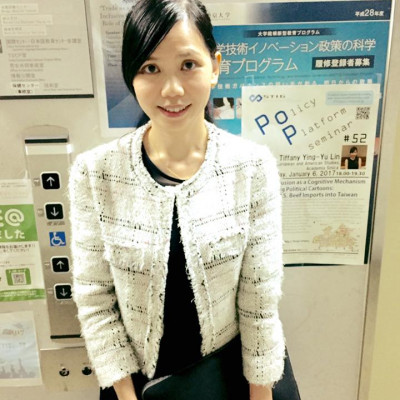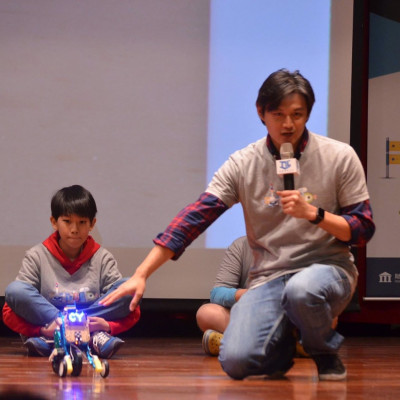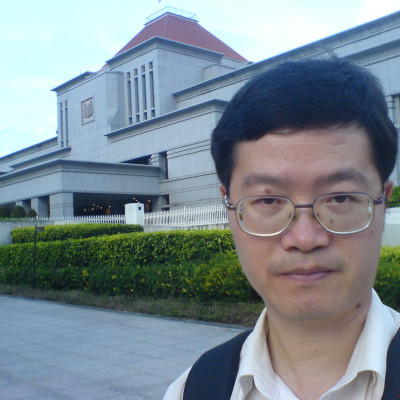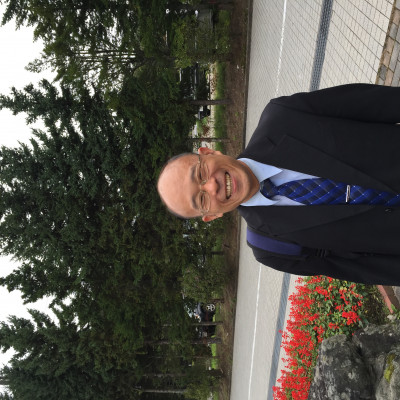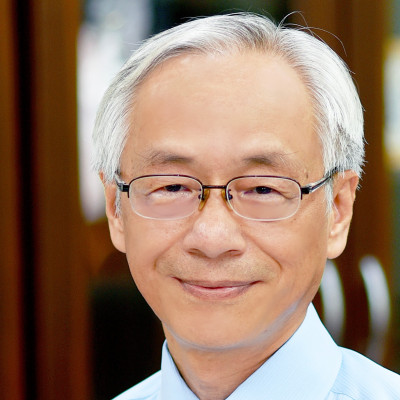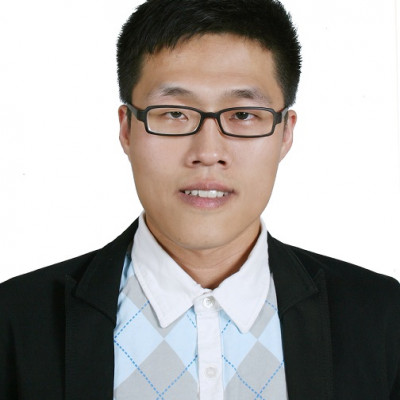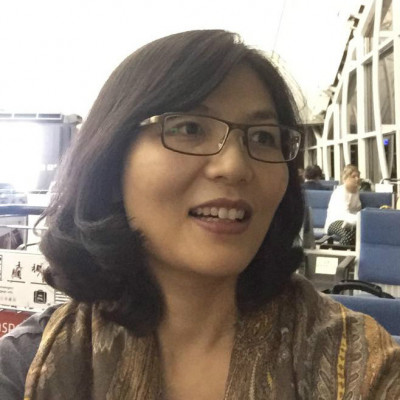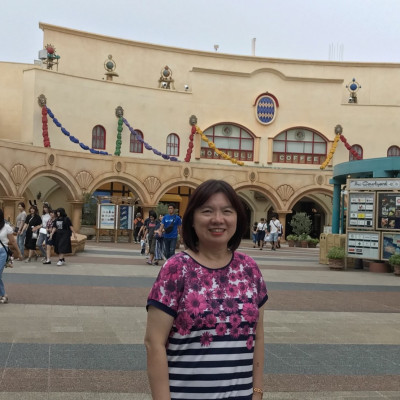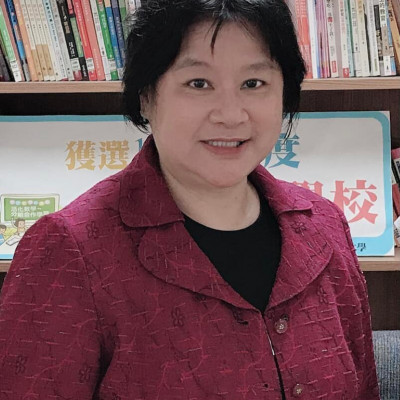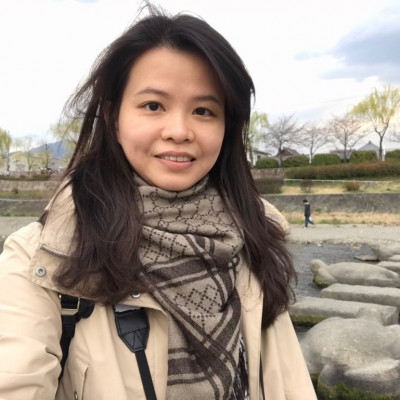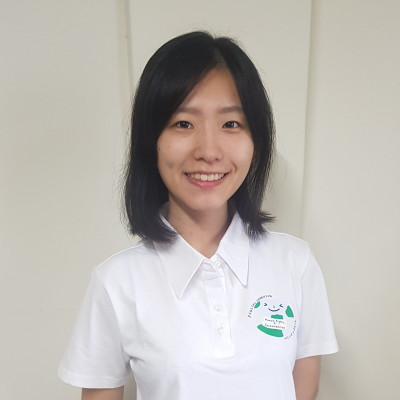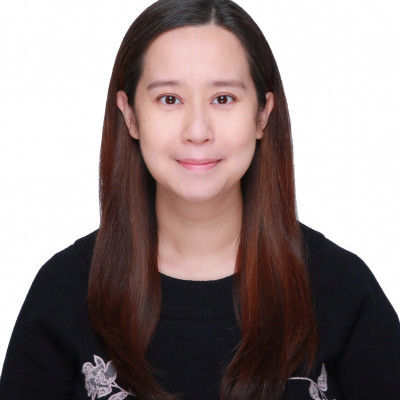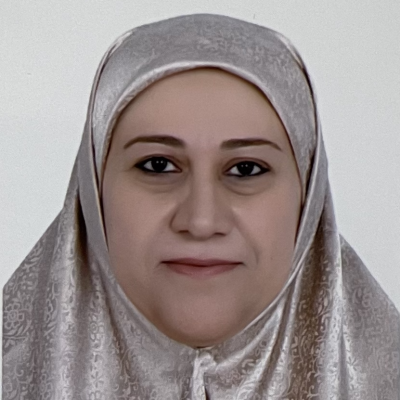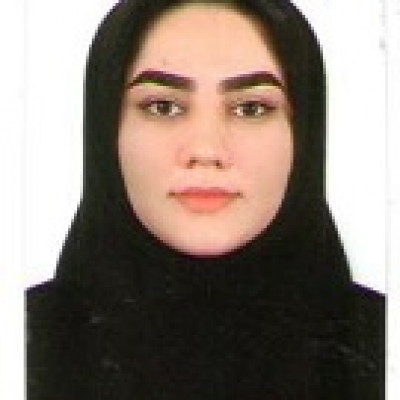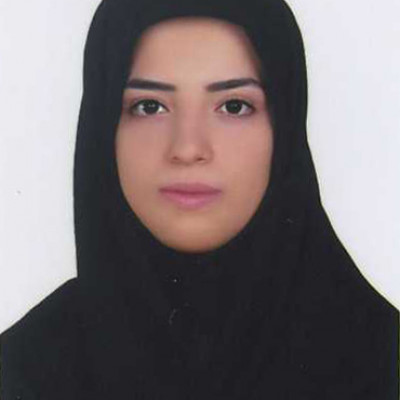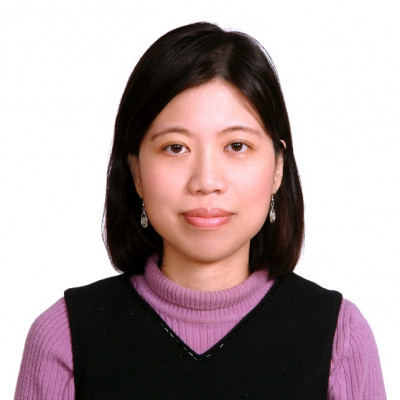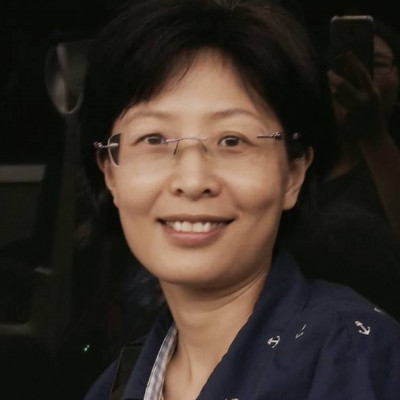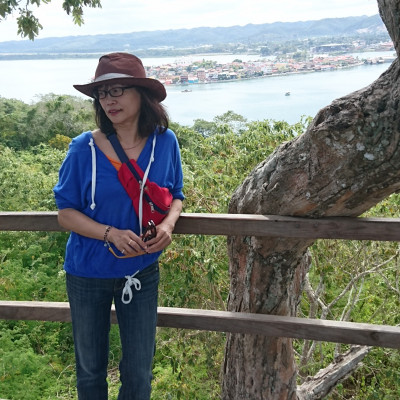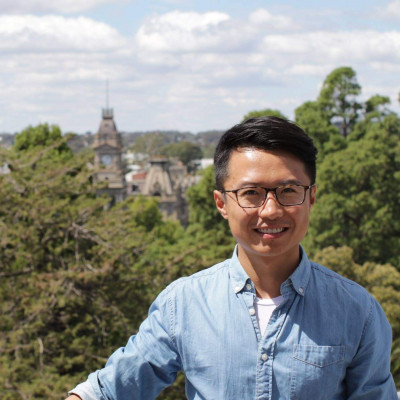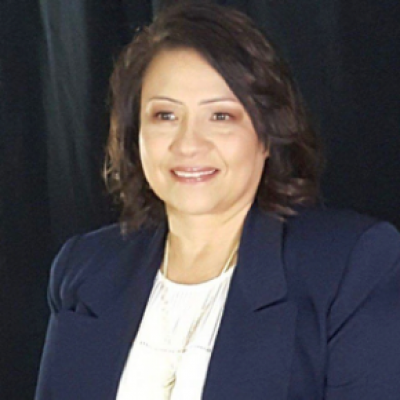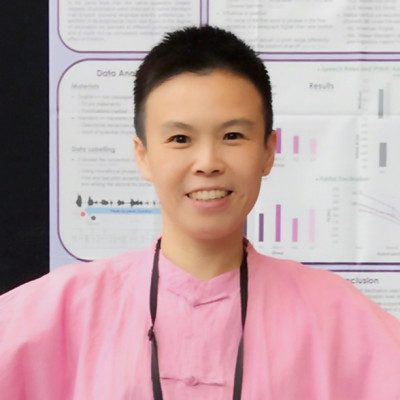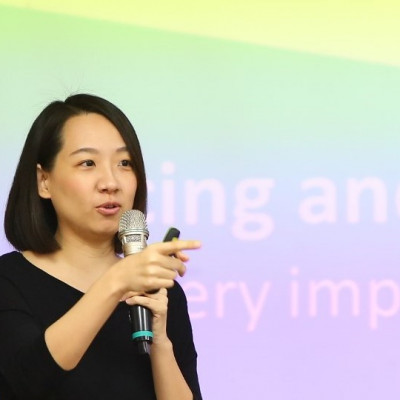Sessions / Regular Presentation (30 min)
A presenter will report the details of an original research. The first 25 minutes will be allotted for the discussion of the following: - statement of the problem - literature review - research question/s - methodology - data analysis - results - limitations - recommendations The last five minutes will be spent on Q&A. The presenter will submit one form, which will include the following information: - presentation title - 300-word abstract - concise information about the presenter
TRANSLANGUAGING AS A FUNCTION OF TRANSCULTURALITY #2510
In this presentation I will seek for a new way to understand the phenomenon of translanguaging. I will argue that translanguaging is foremost a cultural phenomenon in the sense of how we form our ways of life and beliefs on how the world works, and that it occurs as a function of how we use language as a means of finding meaning and confirmation of those beliefs, in a globalized world where information comes to us in multiple media and languages. In order to reach there, I will first deconstruct the mainstream Herderian concept of folk- and nationbound culture, as it seems inadequate to capture how we deal with our globalized life circumstances and choices, especially on the level of languaging. I will also suggest that the concept of transculturality as advanced by German philosopher Wolfgang Welsch (2001), may serve the purpose of understanding this phenomenon better. After briefly discussing the concept, I examine the idea of how translanguaging becomes a symptom of a transcultural process in which people no longer make a meaningful distinction that decides their identity, between their “own” language or a “second” language. The discussion on English as a Lingua Franca and how to teach language in this perspective, can also be seen in the context of this framework. I propose that the concept of transculturality may provide an insightful basis for understanding the phenomenon of translanguaging so that more profound approaches to this can be found in the field of education.
The Effect of Using Automatic Speech Recognition System to Improve EFL Students’ Pronunciation Performance #2502
Pronunciation has been an important topic in the field of English education. However, students’ pronunciation performances are often difficult to be evaluated statistically and systematically with instant feedback. To solve this problem, some studies applied Automatic Speech Recognition (ASR) system to help students correct the pronunciations. Yen (2019) used Learn Mode to help Taiwanese senior high school students to solve their English pronunciation problem, however, very few elementary school students in Taiwan have used this system to help with their pronunciation problems. This study aims to demonstrate how the phonetic-based ASR system, Speech Ace, could provide elementary school students phonetic-based feedback and identify the problems more precisely by investigating the effect of applying Speech Ace to improve young EFL students’ pronunciation performance. This study provides the analysis of 130 fifth grade elementary school students’ pronunciation performances and the relevance between ASR and their performances. The participants received pronunciation instructions focusing on 3 topics, including “m, n and ŋ”, “ɔ and ɑ” and “ɛ and æ” as a reviewing activity. After the instruction, the participants use Speech Ace to practice with the target words. The results are recorded and analyzed to compare the difference between the participants’ pronunciation performances before and after using Speech Ace. Our preliminary findings show the participants’ pronunciation performances improved through online practices with the ASR system, Speech Ace. The students are more engaging to improve pronunciations with gamification and multimodality based on the system, initiating positive peer competition and self-learning motivation. With ASR system, teachers can help students clarify the results more efficiently and guide the students how to practice more specifically to improve their pronunciations.
Voice, agency and identity via bilingualism in ESL writing classroom #2515
This present study explores the functions of L1 as a language resource in an L2 collaborative writing group. Specifically, it aims to determine how the interlocutors’ first language produces power and identity in the production of knowledge during the pre-writing stage. Participated by selected junior high school students in a premier public high school in the Division of Cavite in the Philippines, the researcher recorded and transcribed the small group’s conversations into episodes to examine the linguistic choice of the participants that elicit power and identity building using their first language in an L2 learning space. Guided and influenced by Vygotsky’s sociocultural theory, which highlights language as a cultural artifact that upholds dialectical relation between the learners and the social world, results revealed that the students’ L1 could serve as a language resource in sustaining their voice necessary to build power and identity. This is manifested by the learners’ use of code-switching and code-mixing in ESL classrooms to empower them as significant members of the learning groups. Interestingly, pure L1 also proved that it has functions to play in producing and sharing authentic knowledge necessary to learn L2 and to establish their learning identity and agency. Hence, this study proves that local and authentic knowledge reflected in a bilingual learning engagement produces cohesiveness in L2 writing.
A preliminary study on developing bilingual classroom assessment #2524
The study draws upon a conceptual framework of the three assessment approaches (assessment of/for/as learning) and a five-phase cycle of bilingual classroom assessment that subsumes (1) planning assessment, (2) collecting and organizing assessment information, (3) interpreting assessment information and providing feedback, (4) evaluating and reporting assessment information, and (5) taking action on the assessment results. Within this framework, the purpose of the study is to develop five modules of bilingual classroom assessment across the bilingual curricular on the arts, the health and physical education areas, cross-area project, and the using English as a medium of instruction in the English subject (i.e., the EMI). By the design-based research approach, the study investigated how the bilingual classroom assessment practices were contextualized and developed with foci on the lesson planning, the instruction implementation, and post-lesson reflections from the teachers’ perspectives. Data-collection techniques included via interviews, lesson co-planning notes, lesson observation notes, students’ worksheets and assessments, and the teachers’ post-lesson reflections. Five secondary schools (4 junior high schools, 1 senior high school) and 7 teachers (3 English teachers, and 4 content area teachers) partook in the study. Preliminary findings revealed the five assessment modules that detail why, what, how, and so what of the assessment, alongside a succinct lesson plan of a unit (a range of 3 to 16 class periods). In terms of post-lesson reflections, content-area teachers emphasized the importance of aligning classroom participation and English learning targets with the assessment tasks, so as to facilitate the dual-focused learning of Grades 7 and 8 students in bilingual classrooms. In terms of EMI, English-subject teachers indicated a need to set fewer learning targets as well as to slower the instructional pacing, so as to guide the self-directed English learning of Grade 7 students. The study delineates the implications of bilingual classroom assessment.
Cognitive Discourse Functions and Multimodality in CLIL Science #2516
As CLIL (Content and Language Integrated Learning) has been widely implemented in bilingual education, the language which teachers use in class plays a key role in helping students learn content and language at the same time. This study aims to examine how content can be introduced through the use of language with different “Cognitive Discourse Functions” (Dalton-Puffer, 2013) to help students learn content knowledge and language effectively, including seven types of Cognitive Discourse Functions: describing, defining, explaining, evaluating, categorizing, reporting and exploring. This study aims to examine how Cognitive Discourse Functions can be achieved for better learning effects in bilingual science class through the use of language and multimodality, including pictures, songs, and videos. With a classroom-based approach, three bilingual science classes in 4th grade are observed, recorded, and analyzed. There are some data which have been collected for analysis. The preliminary study will be presented in the talk. Some examples of how Cognitive Discourse Functions can be categorized and used in bilingual science class will be included. Our preliminary findings show that “DESCRIBE” and “EXPLAIN” may be the most frequently-used cognitive discourse functions in the language use in bilingual science class, while the pictures and videos used to serve the function “EXPLAIN” is most frequently used in bilingual science class. This research hopes to provide suggestions for bilingual science teachers when and how they can use the language to help and facilitate their students’ learning. For example, what language would be most commonly used when teachers want to define in their teaching. Or when teachers are trying to evaluate, maybe there are some words or specific language to help students to instruct and comprehend.
How can we add more value to bilingual PE lessons? Variability of practice is critical in quality physical activity for children #2558
Since the Bilingual living environment has become a vital national policy, county and city government and research centers have conducted research and develop teaching materials to achieve the main goal. In recent years, more subjects have been putting effort into learning through foreign languages. Physical Education (PE) is often the subject chosen for applying multilingual initiatives based on content and language integrated learning (CLIL). CLIL provides students with enhanced opportunities to acquire skills and knowledge in additional languages, while learning a variety of subjects. Student can learn a second language through daily life and natural patterns, since Physical Education is taught in English. How can we add more value to bilingual PE lessons, not just motor skill development and language, but also achieve competency? Variability of practice is critical in quality physical activity for children, and it increases the formative value of physical activities. The textbook of Taipei municipal for PE covers new curriculum, provides a work plan, and explains how to plan PE-in-CLIL units and lessons. In the text book, we consider the beneficial effect of PA level, motor development, and variability of practice to develop competencies with international perspective and cultivate a new generation of citizens.
The urban-rural divide comparison structure of bilingual education #2509
This study intends to create a conceptual structure for urban-rural divide comparison of bilingual education. Researchers applied Delphi technique based on twelve experts (including scholars) to create an urban-rural divide comparison structure of bilingual education. The researchers created a preliminary structure through literature review, field observation, and interview with educational practitioners, and then provided this structure draft for twelve experts to review and score each dimension and item in the structure. After the first run feedback, researchers revised the structure with all experts’ feedback, and then the experts provided their second run revising. Through four-run revision, all experts reached the consensus on the structure. The research has built the urban-rural divide comparison structure of bilingual education that includes six dimensions: bilingual competency, bilingual curriculum and pedagogy, bilingual using environment, bilingual resources, technology, and confliction. The bilingual competency dimension includes four subcategories: teacher bilingual competency, student bilingual competency, and administrator bilingual competency, and parent bilingual competency. The bilingual curriculum and pedagogy dimension includes bilingual curriculum design, bilingual instruction, and bilingual activities. The bilingual using environment dimension includes school bilingual environment, community bilingual environment, and family bilingual environment. The bilingual resources dimension includes English professional classroom, library, native speaker, and English cram school. The technology dimension includes online access equipment, internet accessing, and bilingual online content and resources. The confliction dimension includes learning burden (one more language to learn and conflict with other learning), mother-tongue language (benefit from mother tongue language or threaten to mother tongue language), culture identity confliction (cultural identity and nationality identity). The research result could act as a criterion to evaluate the urban-rural divide of bilingual education in individual school and provide a clear guide for educators and administrators to apply a remedy measure on the specific dimension and subcategory.
Teaching Young Learners Mathematics: A CLIL Approach #2520
As literature indicates, it can be argued that mathematics is a language because it has its own set of rules, and with a finite number of symbols an infinite number of utterances can be created. Students need to master this language in order to read, understand, write down, and discuss ideas. In a CLIL lesson, both the learning of mathematics concept and the simultaneous learning of a second or foreign language is emphasized. This present paper will examine the following two aspects: How to scaffold young learners to process the mathematics concept through a second language? How to guide young learners to learn the mathematics language?
Elementary School CLIL Teacher’s Target Language Competence and Pedagogical Knowledge #2521
The promotion and practice of bilingual education in Taiwan are sometimes met with doubts and even resistance from classroom teachers, and one major reason is the lack of confidence in their target language competence in teaching CLIL lessons. This presentation will argue that a CEFR minded rhetoric about bilingual teachers’ target language competence requirement actually does a disservice in the promotion of bilingual education. I will discuss different aspects of bilingual teachers’ target language competencies, and provide suggestions for teacher preparation institutes and government agencies to better support teacher’s professional development in this respect.
CLIL Teachers’ Collaboration Process in a Primary School #2533
Content and Language Integrated Learning (CLIL) is a dual-focused educational approach in which language is used as tool for the learning and teaching of content. It has been widely adopted in various contexts, and many studies have been conducted to investigate the effects of such programs on students’ language learning, content learning, attitudes and motivation. The findings of previous research indicated that some CLIL programs were successful, while others failed to produce positive results. As CLIL programs is interdisciplinary, one of the factors that affect the success of CLIL is the collaboration between language teachers and content teachers. However, very few studies were conducted to document the collaboration process of CLIL teachers. Thus, the present study explored the collaboration between English teachers, the collaboration between English teachers and content teachers, and the participating teachers’ professional development in a CLIL program through observation, interviews, and analysis of documents. The participants were 2 English teachers and 7 content teachers in a primary school in Taiwan. Through analyzing qualitative data, the present study found the frequency of CLIL teachers’ interdisciplinary meetings, the participants in the meetings, and the interaction between English teachers and content teachers in the CLIL classroom had changed over time during the implementation process. Moreover, the participating teachers gradually increased their understanding of the important concepts related to CLIL and integrated these concepts into the design of lesson plans and teaching materials. Based on these findings, some pedagogical suggestions for teachers to implement CLIL programs and collaborate in such programs will be provided at the end of the paper presentation.
On Improving Student Teachers’ Bilingual Science Teaching Performance and Self-efficacy: An Action Research #2517
In the 2020 academic year, ten senior students from a pre-service bilingual education program participated in a one-year elementary school teaching practicum at W elementary school with a focus on teaching science bilingually in both Mandarin Chinese and English. This study aims to explore student teachers’ changes in their performance and self-efficacy of teaching science bilingually. The practicum class met four hours a week, during which the students received full support and supervision from the case university, researchers, and W elementary. The student teachers’ instructions were evaluated by a Science education expert and a CLIL expert twice, once in November 2020 as pre-teaching performance, and the other during their full-time teaching at W elementary for three weeks in March 2021 as post-performance. Students’ teaching strength and weakness were analyzed after the pre-test. Most students applied the confirmation inquiry model (not the open-ended inquiry model as recommended in science education), used instructional language that was too difficult for children, showed poor class time management. A three-week remedial coaching program was conducted accordingly with intensive professional consulting among researchers and students during the winter break of 2021.
The instrument used to evaluate bilingual sciences teaching performance was the Bilingual Curriculum Design and Teaching checklist (Tyan, Chien & Tsou, under review). The results of independent t-tests showed statistically significant improvement from pre- to post-test scores in terms of bilingual science teaching performance (t=2.26, p<.05) and bilingual science teaching self-efficacy (t=2.26, p<.001). Students’ changes were elicited from their final reflection. In terms of teaching performance, students focused more on their teaching during the pre-test. They developed various strategies to support children’s learning during the three-week full-time teaching practicum. In terms of learning assessment, students focused only on teaching during the pre-test and lacked the sense of assessment. During the three-week practicum, students had developed a variety of assessment methods. I used worksheets and oral assessments to confirm children’s understanding. In terms of classroom management, during the three-week period, students had developed humane, rigorous, and diverse methods.
The development of elementary Life Curriculum bilingual teaching materials #2522
Wenzao University of Languages has established a bilingual research center since 2018. One of its tasks is to design bilingual teaching materials for elementary courses, including integrative activities learning area, Life Curriculum, and PE. In this presentation, bilingual teaching materials for Life Curriculum will be discussed. This year, the Wenzao team has completed four Life Curriculum bilingual materials. These teaching materials are to serve as a tool and reference book for teachers, not only English teachers, who want to plan and design bilingual lessons. The content of the books follows the Chinese textbooks. The one presented in this presentation is book 1 (first grade). There are 6 units, and each consists of 5 basic components, namely course introduction, words and phrases, sentence patterns, teaching procedure, and content explanation. During the developing process, we consulted with native English speakers for language usage and wording. We also tested out the content in elementary classes. In-service teachers also gave us feedback regarding the organization, content and language use. Modifications were made accordingly. We hope that this set of books can be a handy and useful tool for elementary bilingual teachers.
How Interactive CLIL Teaching Design Impacts Middle School Students' Learning Experience #2535
Alongside the implementation of the Ministry of Education's 2030 bilingual national policy and competency education (12-Year Basic Education), how to incorporate bilingual, diversified, and interactive teaching materials becomes the top priority for curriculum design. Moreover, middle school students have more opportunities than ever to learn via the Internet and a variety of digital learning media in the post-epidemic period. Therefore, this research intends to determine how interactive media can enhance middle school students’ bilingual learning experience.
This research utilizes a two-hour bilingual and interactive teaching plan and collects students’ feedback before and after instruction. Before proceeding with teaching in a middle school in Taichung City, our teaching plan was discussed and revised with the subjects of history and civic and society teachers. The teaching plan includes many teaching media, such as using self-made English YouTube videos, Instagram, and worksheets to merge interactive treatments and bilingual teaching materials.
After the instruction, most of the students perceived that this 2-hour bilingual lesson was a helpful experience for learning (mean=3.16/ 4-points-Likert scale). A paired sample T-test to compare students’ experiences before and after the learning intervention shows that there was a significant difference after this treatment. Therefore, integrating interactive media into teaching can be a useful strategy for bilingual learning.
Vocabulary Demand for Science Curriculum #2634
This study is a lexical analysis of spoken discourse supporting vocabulary development for English as a foreign language students who are learning science in English. The study analyzed bilingual science lesson from grade 4-6 grade, a lesson from each grade level. The AntWordProfiler was used to analyze the transcripts of the lessons. AntWordProfiler is a “freeware tool for profiling the vocabulary level and complexity of text” (Anthony, 2014, n,p.) that lists the words that occur in a text according to their frequency. Naiton’s (2006) BNC word family list of fourteen 1,000 word lists were used with AntWordProfiler software to show the percentage lexical coverage of the 14 groups of 1,000 words at which the words in the science lessons occurred. The study shows that L2 learners need to know 4000-5000 word families to understand 95% of the words in science lessons.
A Case Study on Native English-speaking Teachers Perspective toward Conducting CLIL in New Taipei City Elementary Schools #2534
This paper is to understand native English-speaking teachers’ perspective toward conducting the Content and Language Integrated Learning (CLIL) into the real classroom in Taiwan public elementary schools. As we know, the Taiwan government policy aims to develop Taiwan into a bilingual Nation by 2030. The two major objectives are ‘elevating national competitiveness’ and ‘ cultivating people’s English proficiency’. Hence, to help Taiwan to become a bilingual country (National Development Council, 2021), bilingual education has become increasingly popular in elementary levels. The literatures represented that CLIL instruction has viewed as an approach to promote students language competence and subject knowledge. Many schools tries to enhance students’ bilingual competence, so they have involved part of subjects or contents to teach in English, such as math, music history and science. English proficiency is believed to become a key factor to develop overall knowledge learning. In order to teach like North American style or so called Native like, the recruiting of native English-speaking speakers from other countries to teach in Taiwan has been used by policy makers as a strategy to improve their CLIL teaching abilities. The levels of local teachers’ English competence are perceived as a barrier to conduct CLIL well enough in class. However, to invite native English-speaking teachers has become the critical issues. What’s the native English-speaking teacher attitude toward implement CLIL in class? how they cooperative with local teachers? And how they deal with discrepancies between knowledge and linguistic skills while teaching in class. Data were collected from various sources, online Individual semi-structured interview, classroom observations and document review. Six native English-speaking teachers are from the United States, United Kingdom, Australia, and Canada. The findings indicated that native English-speaking teachers should been repositioned clearly once they are teaching in Taiwan. They obtain the similar concerns with local teachers regardless of three aspects; the level of students’ English competence, the intention of using CLIL in class, and the cultural issues of working with local teachers. Native teachers finally argues that there are gaps between government policy, school goals and their implementation are still problems while conducting CLIL.
To enhance middle school students’ learning effectiveness and confidence through a curriculum designed using CLIL, digital media and ORID methods. #2537
In response to the national policy of developing Taiwan as a bilingual nation in 2030 and implementing competency education (12-year basic education), how to enhance students’ English proficiency and learning effectiveness has become a very important educational issue. Alongside the demand to shape a sustainable future, this research forms an integrated curriculum design related to sustainability and a circular economy. This curriculum is combined with bilingual digital media, CLIL teaching methods and one of the focused conversation skills – ORID. To evaluate integrated curriculum design, this research will proceed with a teaching illustration and collect students’ responses to self-efficacy and learning feedback. Before proceeding with the illustration, researchers will discuss and revise teaching plans together with civic and society teachers from middle schools. While proceeding with the teaching illustration, an illustrator will appropriate CLIL teaching and learning models, combining these with Mandarin and English teaching materials, including digital media to boost learners’ comprehension. At the end of this teaching illustration, the illustrator will use an ORID method to encourage students to discuss and form their own opinions in English. After the teaching illustration, researchers will exam all feedback and data collected from the students. In doing so, this research intends to examine how CLIL bilingual teaching materials, digital media and ORID methods can improve learners’ learning effectiveness and confidence Through a paired sample T-test, using CLIL bilingual teaching materials and a group discussion method can improve students’ self-efficiency in an elective course (pre mean=24.03, post mean=25.75, p<0.05), and bilingual lessons’ learning effectiveness (pre mean=13.31, post mean=15.1, p<0.001). After the class, students finish their posters, designed by an ORID method, and conduct peer assessment. By doing so, student can appreciate other teams’ posters, recognizing that bilingual lessons are achievable and feeling confident about them. Thus, using a group discussion method in teaching can be a useful strategy for bilingual learning.
English Language Teachers’ Views Toward Professional Development In The Iranian Context #2505
Teacher professional development as a significant aspect of any educational context due to its complex and dynamic nature has been perceived, designed, and delivered differently by various professionals. A more traditionally oriented perspective regards it as a one-shot practice at initial teacher education programs, while the more dynamic view emphasizes its continuity and sustained nature developing during one's profession. Despite the recent growth of interest in the latter, studies investigating the issue through teachers’ lens as critical agents in their professional development in Iran are underdeveloped. The present qualitative study explores a group of Iranian experienced English language teachers' perspectives in this regard in two contexts of high schools and language institutes. Semi-structured interviews were conducted to collect experienced teachers’ views regarding professional development. The body of transcribed data explored through open, focused, and axial coding procedures led to three significant themes, namely the teachers' understanding of professional development, their beliefs about the authority/institute/organization/ responsible for teacher professional development, and their suggestions for improving the status quo of professional development, each theme including specific subthemes. The result of the interviews underscored the need for a combination of theory, practice, and teacher as the three fundamental sides of a triangle, indicating that teacher education courses should be guided by teachers as a principal-agent along with teacher trainers and educators to have a voice to share their valuable personal practical knowledge and experience. The emic understanding gained through this study has implications for teacher education curriculum developers, administrators, supervisors, and TTC trainers.
Classroom-based Research for Teaching and Learning Pronunciation at Elementary School: How to solve Taiwanese EFL Learners’ Pronunciation Problems of Interdental Sounds #2532
Pronunciation has been an important topic in English education, especially for English as a Foreign Language (EFL) learners and teachers. Based on the bilingual education policy in Taiwan (The Bilingual Nation 2030 policy, 2019), one of the objectives is to improve English communication skills. Pronunciation has been one of the key factors for effective communication. Most EFL studies (Hismanoglu, 2009; Bui, T. S., 2016; Ercan & Kunt, 2019) found many EFL learners face difficulties and make errors in pronouncing interdental sound /ð / and /θ/, however, few studies examined the interdental pronunciation errors specifically with a detailed analysis. With a classroom-based approach, this research aims to employ a qualitative analysis to investigate Taiwanese elementary school EFL learners and examine their pronunciation errors of the interdental sounds, including /ð / and /θ/ in English, providing a systematic analysis and phonetic-based learning strategies for elementary school teachers to solve the pronunciation problems of interdental sounds. The research questions are as follows: (1) What errors of Taiwan elementary school EFL learners would occur in pronouncing /ð / and /θ/ in English? (2)What is the pattern of these pronunciation errors when they appear in different positions of a word? (3)What are the causes of the problems in pronouncing /ð/ and /θ/? What is the solution for Taiwanese EFL teachers and learners? This study will conduct a survey to investigate Taiwanese elementary EFL learners’ pronunciation performances with the focus on interdental sound through recordings, interviews, and questionnaires to collect and analyze the general pattern and frequency of the pronunciation errors. Our classroom-based research findings would help to categorize the interdental pronunciation errors and pinpoint pronouncing errors of the interdental sounds in different positions (beginning, middle, or end) of a word, and propose learning strategies for English teachers and learners to solve the pronunciation problems with phonetic-based effectively.
Vlogs as a resource for CLIL teaching—An example of culinary English instruction #2513
Content and Language Integrated Learning (CLIL) has been a trend for contemporary education that aims to develop learners’ language competence and content knowledge simultaneously. Based on the example of culinary English instruction, this study proposes that vlogs can be appropriate authentic CLIL materials to expand learners’ content knowledge about culinary arts and cultivate linguistic competence in specialized lexicon, cuisine-related discourse, and characteristics of recipe telling. Five clips produced by different food vloggers were analyzed and adapted for pedagogical use, towards which learners’ perceptions were then explored through a self-designed questionnaire after the vlog-based instruction. The results show that in addition to specialized terms and dish-making instruction, vloggers’ sharing of food culture information, personal experiences, and suggestions for cooking could be practically applied to learning tasks such as cloze tasks, unscrambling practice, and creativity-based questions and was suggested to further extend to hands-on tasks. When implemented in lessons, the vlog-based materials were positively perceived as interesting, useful, and efficient both in reducing learning anxiety and in raising competence in listening comprehension, specialized lexicon, food culture, and culinary skills. Finally, based on the findings, this study offers suggestions for the selection and use of vlogs for instruction.
Evaluating the Effectiveness of EMI Courses in Taiwan Through Students’ Perspectives #2536
In response to globalization and as an adaptive means to 2030 bilingual nation policy, English mediated instruction (EMI) is an emerging phenomenon in higher education in Taiwan and has received energetic discussions, exploring its potential to attract international students and boost domestic students' international competence. However, there is still a distinct lack of evidence in support of EMI courses’ effectiveness on a synchronic improvement of students’ content and language learning. To fill this gap, this study conducted a survey with both quantitative and qualitative questions with the recruitment of ninety-four non-English major college students in a private university in northern Taiwan. The questionnaire started from a draft, was then reviewed by two teacher reviewers and a student reviewer before it was finalized. Three groups of questions were devised to correspond to three research questions and to elicit the student participants’ perceptions of the EMI courses they attended. Regarding the effectiveness of EMI courses on content learning, quantitative data showed that slightly more than half of the participants disagreed. However, qualitative data revealed that the participants did agree upon a need for EMI courses and believed that EMI courses would be helpful. Their disagreement stemmed more from concerns of an extra burden of using English and stress on comprehending terminologies in their major fields. In other words, once the students' concerns could be addressed, using English as a teaching language itself would not be an issue. Regarding the effectiveness of the EMI courses on language learning, it was positively accepted by the participants, and both listening and speaking skills were rated as being improved. Writing was the least trained language skill. Major factors influencing the students’ choices of EMI courses centered on the course content and teaching styles rather than the teaching language. The findings of this study overall supported the further promotion of EMI courses on campus and provided a base for both course design and pedagogical implications. Contrary to a provision of adaptive courses proposed in previous studies, it was suggested here that no separate adaptive courses be needed. Instead, adaptive teaching strategies should be discussed and applied to transform the regular teaching to EMI. Also, apart from a confirmed need for translanguaging, a specific description of desirable teachers’ classroom translanguaging was proposed. It seemed essential that core terminologies be delivered bilingually to guarantee students’ comprehension and that translanguaging make up no more than one-fourth of the teaching language and occur only with the teaching of core terminologies. Other adaptive strategies included a slowed speech speed and necessary repetition. This study also proposed that the discussion of EMI courses not be limited to whether or what courses should be taught in English, but extend to and center on how the target content could be successfully delivered in English by a teaching cohort, the majority of whom are non-native English speakers.
Conception and evaluation of a German and bilingual teaching-project with a focus on biological content knowledge #2543
Introduction: Plenty of studies have shown that language proficiency of bilingually educated pupils is significantly higher as opposed to traditionally taught pupils (Burmeister & Daniel, 2002, p. 499). On the other hand, empirical research concerning the acquisition of content knowledge in bilingual teaching is practically nonexistent (Bohn & Doff, 2010, p. 72). Furthermore, there is a lack of teaching material in foreign languages that is suitable for ESL (English as a second language) pupils. The study's aim is to make up for these shortages via the conception of high quality bilingual teaching material and an empirical study that scrutinizes the acquisition of content knowledge.
Method: The first step was designing bilingual teaching material. Therefore, the topic "water" was chosen and elaborated for German school children at grade 7. The material was printed by the renowned German publisher Klett. The material was used to conduct a comparative study at 10 German schools. At each school, a teacher taught two classes for a period of four weeks. One of the classes used the mother language, the other one was taught in English. A third class served as a control group that was tested, but didn't receive teaching. Content knowledge was documented by specifically created tests in a pre-, post-, follow-up design. As an addition, empirically validated motivational tests accompanied the study (Wilde, 2009, p. 31). The researcher’s hypothesis was that the pupils taught in the mother language would gain higher content knowledge than the bilingual ones.
Results and discussion: As predicted in the hypothesis, the pupils taught in the native language outperformed the bilingual pupils in the matter of content knowledge. The differences were statistically significant, but not as huge as expected beforehand. It is also noteworthy, that the bilingual group learned significantly more than the control group. The motivational test revealed no statistically significant differences whatsoever. To compensate the lack of content knowledge, more lessons should be assigned to a bilingually taught subject. Further studies should monitor bilingually taught classes over a longer time period to discover how content knowledge improves throughout time in comparison to a control group.
Creating an effective immersion environment for bilingual programs: A language planning action research in Australia #2504
This presentation reports on an action research project undertaken by the presenter over the last 12 months, as he began his principalship in a Chinese/English bilingual school in Melbourne, Australia. Like most bilingual schools in Australia, the presenter’s own school offers a 50-50 one-way bilingual program for a student population that largely consists of non-Chinese heritage speakers with no exposure to the language beyond the school environment.
The action research project aims to uncover the necessary ingredients for creating an immersion environment beyond the classroom for the minoritised target language, in this case, Chinese. The first half of the presentation will focus on two strategies trialled at the school in the 2021 school year and the results to date. These findings have prompted further investigation, for which the school has engaged an external researcher.
The second half of the presentation will explore the theoretical foundations that underpin the work attempted and the next iteration of the school’s plan to create an immersion environment through school-based language policy initiatives, encompassing multiple semiotic resources, and encouraging translanguaging practices with an aim to cultivate students of bilingual/multilingual competence and identities. Data will be collected using an ethnographic approach by the researcher on the school site, eventually the study is attempted to result in an evidence-based “switch-board” style language policy document that could guide the thinking behind language choice for leaders of bilingual schools.
Being a collaborative project between a frontline practitioner and a researcher, it is hoped that the presentation of the findings to date and the school’s upcoming plans could open a fruitful dialogue between bilingual schools that also share the same challenges.
Bilingual education policies and teacher preparation-From Texas to Taiwan #2507
In Texas, English Learners (ELs) enrollments have constituted an ever increasing proportion of the state’s public school population accounting for 11.8 percent of the total number of student in the public school. Thus, bilingual education and English as a second language programs are required or can be implemented as a social option. The needs of bilingual and ESL teachers are in a high demand to work with ELs. This presentation will include the topics of the bilingual education policy in Texas, pathway of preparing bilingual educators, content and language integrated teaching and learning, sample lessons, creating an effective learning culture in the bilingual classroom, and implications of Texas teacher preparation to another context (e.g., Taiwan). The presentation will be based on research-based evidence and classroom experiences from EC-6 bilingual educators. The presentation will focus on the pathway of preparing bilingual educators, and content and language integrated learning through classroom projects and lesson plans. At the end of the presentation, the presenters will discuss the modifications to meet the students' needs when implementing bilingual education to a different context.
Pre-Service Teachers’ Perceptions Toward Global Learning Experience: Implications for Teacher Intercultural Competency Development #2508
With the shifting makeup of diverse student populations and their needs in today’s changing landscapes of education, teacher education reforms in the U.S. have placed a premium on the development of knowledge and skills that characterizes culturally and linguistically competent teaching necessary for pre-service teachers to address the needs of a changing society. Drawing on existing frameworks of orientations and pedagogical knowledge and skills for enhancing teachers’ intercultural competency, this study examined pre-service TESOL and Bilingual Education teachers' (N = 17) attitudes and perception of their global professional experience in a fieldwork assignment where New York-based teacher educators conducted a ‘virtual school visit’ to a school in India where they were guided by their Indian global partners to survey the host schools’ learning environments and teaching practices.
To explore and gauge the knowledge and skills candidates gained through this intercultural experience in teacher education courses, the author analyzed candidates’ forum discussions and reflections as they discussed the findings of their curricular investigations in their collaborations with their cross-cultural partners. Selected participants were interviewed to discuss their learning via digital platforms, such as emails, discussion boards and video-conferences.
Results indicate that while most participants are aware of pedagogical knowledge related to second language and bilingual acquisition and aware of the need to work with students from diverse cultures, there were significant levels of knowledge gaps when they were taken out of their cultural and linguistic comfort zones. The author recommends that teacher education programs incorporate a critical approach to global learning experience in teacher education programs to address these knowledge gaps in theory and practice throughout meaningful experiential learning in a comprehensive, long-term manner, so that candidates can develop the knowledge and competencies necessary to engage differences and strengthen their commitments to moving toward more equitable learning outcomes for all students.
Constructing Professional Competency Indicators for Content and Language Integrated Learning (CLIL) Teachers in Taiwan #2523
Originally from Europe, Content and Language Integrated Learning (CLIL) has been adopted as the mainstream bilingual education model for Taiwanese primary and secondary schools in recent years due to its dual content-and-language focus and the flexibility with which it can be adapted to local educational contexts.
In response to Taiwan’s “2030 Bilingual Nation” policy, the Language Training and Testing Center (LTTC) has been working closely with city education bureaus and university-affiliated bilingual education centers on the development of resources for CLIL teacher training and classroom assessment. To further align the center’s previous efforts and to fill the gap in CLIL-related research conducted so far in Taiwan, the LTTC initiated the present study. It encompassed document analysis, panel discussions, surveys and interviews to create a proposed set of professional competency indicators for local CLIL teachers.
In this presentation, we will provide a description of the professional competency indicators, covering how they are aligned with existing competency frameworks for CLIL teachers (e.g., Bertaux et al., 2010; Marsh et al., 2010), while at the same time supplemented by professional standards developed specifically for teachers in Taiwan (e.g., Chen 2014; Chung et al., 2012) as well as literature related to CLIL teacher professional development in other countries and regions (e.g., Lo, 2020; Rutgers et al., 2020). These indicators serve as a point of reference for discussions pertaining to CLIL teaching, teachers’ professional development, and related research in an EFL context such as Taiwan. Since they are meant to be of use in the Taiwanese context and to inform local teacher training, we will also elaborate on how the indicators address local needs to support learner-centered teaching and assessment practices.
ZOOM ZOOM! POWER CAR #2545
Students can analyze and explain the characteristics of each energy, and know the power origin from power car. By understanding the principle about power cars via 5E Learning Cycle, students can nourish essence of scientific inquiry and practice.


